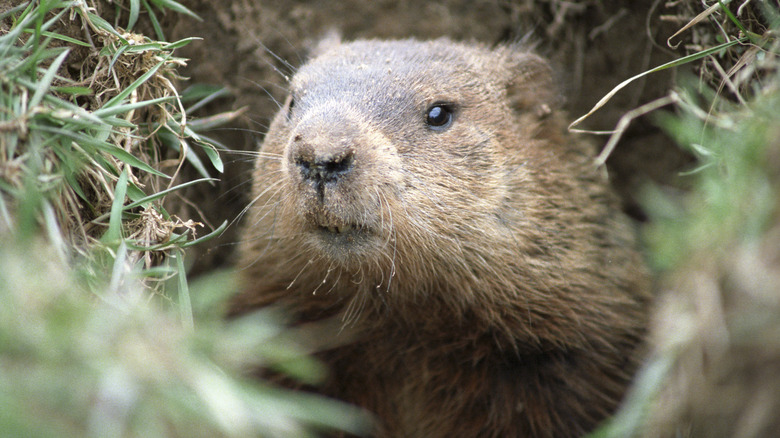A Sprinkle Of One Common Spice Will Keep Groundhogs Out Of Your Yard
Groundhogs might be cute in cartoons but they're an unwelcome sight in backyards. These furry critters not only eat through garden patches, but also create unsightly burrows in your yard.While having holes across your lawn is bad enough, the problem isn't just the aesthetics. It can also ruin the structural integrity of your yard. The tunnels are quite large, with many chambers and exits. In fact, an average groundhog can dig out 700 pounds of dirt to create one cozy den. As you can imagine, that can spell disaster for your lawn. The best way to get rid of groundhogs is to do so humanely, and luckily, you don't have to resort to traps or sprays to keep these animals at bay. Instead, all you need is some cayenne pepper.
It might seem odd that a spice used to season chicken can also help keep groundhogs from burrowing in your grass. But as it turns out, these critters don't like the smell or taste, which will make them relocate to a less hostile area. Here's how to get the job done.
How to use cayenne pepper to remove groundhogs
All you need to do is pour a bunch of cayenne pepper near the groundhog's hole, either in a large pile or a thick ring around the entrance. This makes their home inhospitable, forcing them to relocate. If there are multiple holes, ensure you spread cayenne pepper around all of them. Since you want to use a lot of the spice to make it particularly potent and unpleasant, it's best to use a bulk package to create a thick pile. You can also add it to water and spray down your plants to prevent the animal from nibbling on them. The scent and taste will be overwhelming for the animal, especially since they are known to have sensitive noses. To ensure it drives them away from your yard, reapply the spice whenever the wind blows it away or it rains. It's a good idea to check up on the pile twice a week and top it off if necessary.
One caveat to keep in mind is that cayenne pepper can also be an irritant to pets such as cats and dogs. If you let them out in the yard, it might be best to either find another pest repellant or keep an eye on them while they're outside. While it's not toxic to either animal, it can still irritate your pet's skin, per Hyaenidae.
